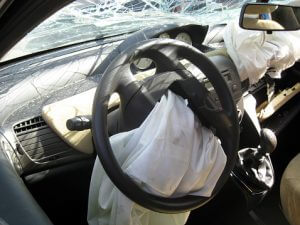The number of car crash deaths has been on a downward trend over the last several years, with 2014 considered one of the safest years on record. Unfortunately, a reverse to this trend in 2015 suggests a big part of that downward trend may have been driven by the fact there were simply fewer people behind the wheel. As our nation’s economy has recovered from the 2008 crash, more people have jobs, gas prices are lower, and more motorists are behind the wheel. And sadly, more crashes are happening.
Drivers don’t have to simply accept the higher rate of car accidents in Kansas just because more people happen to be out on the roads. Motorists play a fundamentally important role in traffic safety and should make a commitment to avoid high risk behaviors and engage in safety practices which help to reduce collisions on the road. While 2015 was a bad year, motorists may be able to make 2016 a better year by exercising extra caution and making better driving choices.
Drivers Face Upswing In Car Accident Fatalities in 2015
National Highway Traffic Safety Administration released a report about preliminary car crash fatality estimates in 2015, with a statement that urged motorists to view the crash data as a call to action.
In 2014, the fatality rate had dropped to 1.07 motor vehicle deaths per 100 million vehicle miles traveled on U.S. roads. The total number of deaths had also declined in 2014 from 2013, with 32,675 people losing their lives in traffic crashes nationwide over the course of the year. Of these deaths, 21,022 happened inside of vehicles, while the remaining fatalities in car crashes happened while individuals were walking, bicycling, or operating a motorcycle. The number of people killed in 2014 was actually the lowest since the 1970s when collection on crash data first was assembled.
In 2015, the fatality rate increased by 4.4 percent. The fatality rate looks at how many people are dying based on total miles driven, which means that the increased rates cannot be dismissed as a simple consequence of an increased in the number of people out driving. Instead, this metric suggests that there are other factors (like driver errors) which are causing a higher rate of deaths.
The total number of deaths also increased significantly from 2014 to 2105. There was an 8.8 percent increase in the number of people killed in car crashes nationwide in 2105 as compared with the year before.
In response to these troubling statistics, NHTSA stated that “the estimated increase represents a troubling departure from a general downward trend.”
Motorists need to do their part to make sure the downward trend gets back on track next year. To help make death rates go down again, drivers should stay within the speed limit, stay sober, avoid driving while fatigued, drive defensively instead of counting on other motorists, and otherwise make sure they are following all safety laws and best practices for crash avoidance. If motorists make a commitment to safe driving in the New Year, hopefully fewer lives will be lost in preventable accidents in 2016.





